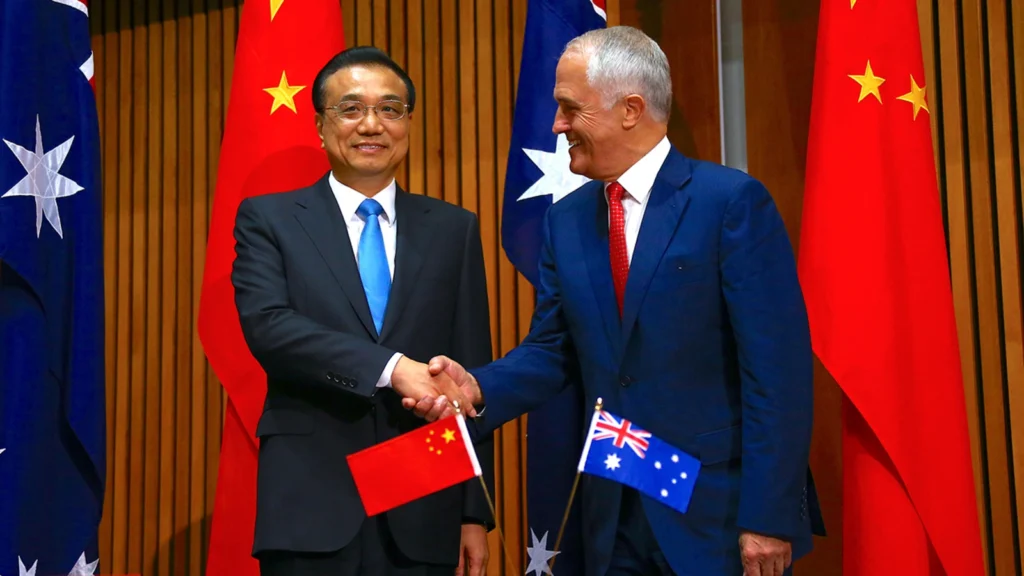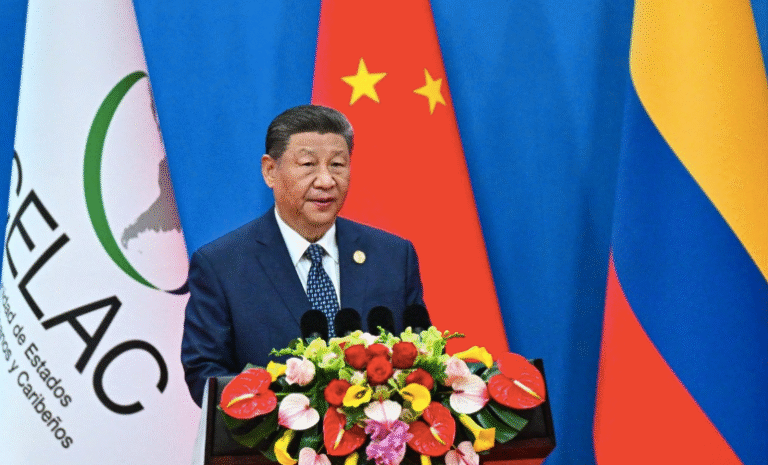
Canberra: As trade tensions between the United States and China escalate, Australia has firmly declined an invitation from Beijing to align against Washington’s sweeping tariffs. The offer came from China’s Ambassador to Australia, Xiao Qian, who urged Canberra to unite with Beijing in opposing what he termed as “hegemonic and bullying behavior” by the United States.
In an op-ed, Ambassador Xiao emphasized the need for “solidarity” in response to the 125% tariffs imposed by President Donald Trump on Chinese goods. “China stands ready to join hands with Australia and the international community to respond to changes in the world,” he wrote.
However, Australian Deputy Prime Minister Richard Marles swiftly dismissed the proposal, stating, “I don’t think we’ll be holding China’s hand.” While reiterating Australia’s desire to avoid a trade war, Marles made it clear that Australia would prioritize its national interests over aligning with China on global trade issues.
Rising Tariff Battle Between Superpowers
The latest developments follow the Trump administration’s move to increase tariffs on Chinese imports from 104% to 125%, after China raised its tariffs on US goods from 34% to 84% in a retaliatory move. While Washington has temporarily paused new tariffs on countries that did not retaliate, the 125% levy on China threatens to destabilize global trade.
With China being Australia’s largest trading partner, the economic consequences of these tariffs are expected to impact Canberra significantly. According to Australia’s Treasury and Reserve Bank models, the country will be indirectly affected via the “China channel,” meaning any slowdown in Chinese demand will hurt Australian exports.
Despite these risks, Prime Minister Anthony Albanese emphasized that Australia is focused on protecting its own interests. “Our trade relationship with China is crucial, one in every four Australian jobs is trade-related. But 80% of global trade doesn’t involve the US, and there are opportunities for diversification,” he stated.
Turning to Trade Diversification
Rather than siding with China, Australia is seeking to diversify its trade relationships to reduce dependency on Beijing. Deputy PM Marles noted efforts to deepen economic ties with countries like India, Indonesia, the UK, and the UAE.
This move is consistent with a broader shift in Australian foreign policy. Although China and Australia share strong trade ties, relations have been tense since 2020 when China imposed trade restrictions on Australian imports after then-PM Scott Morrison called for an independent inquiry into the origins of COVID-19.
Despite the easing of some of these trade barriers, tensions persist, particularly as China expands its influence in the Southern Pacific, long considered Australia’s strategic backyard. The 2022 security pact between China and the Solomon Islands raised alarms in Canberra about the possibility of a Chinese military foothold near Australia.
Security Ties with the US Take Center Stage
Australia’s refusal to align with China is unsurprising given its deepening military alliance with the United States. In recent years, Australia has significantly ramped up its defense collaboration with Washington, acquiring a wide range of advanced weaponry.
The US Department of State has approved the potential sale of up to 400 AIM-120 AMRAAM air-to-air missiles to Australia. Additionally, Australia is procuring over 200 Tomahawk cruise missiles, along with hundreds of SM-2 and SM-6 long-range naval missiles, to enhance its defense capabilities.
A key pillar of this cooperation is the AUKUS pact, signed in 2021, under which Australia will acquire nuclear-powered submarines. The deal includes the purchase of Virginia-class subs from the US, while Australia develops its own AUKUS-class fleet. Though recent reports highlighted a required US$2 billion investment by Australia to upgrade its shipbuilding capacity by 2025, Canberra remains committed.
Australia is also investing in American platforms like HIMARS rocket systems, Abrams tanks, and F-35 fighter jets. Air Vice-Marshal Nicholas Hogan recently reaffirmed the Royal Australian Air Force’s confidence in the F-35 amid international scrutiny. The opposition has pledged to expand the fleet with an additional 28 jets if elected.
US Military Presence Growing in Australia
The US has expanded its military footprint in Australia, particularly in Darwin. Major investments include new fuel storage facilities at RAAF Base Darwin, which will support US aircraft operations in the Indo-Pacific. Every year, roughly 2,000 US Marines rotate through northern Australia under the “enhanced air cooperation” initiative.
In 2024, the two allies signed new agreements to bolster joint weapons production and grant the US greater access to Australia’s northern and western coasts. Both nations also regularly conduct joint military exercises and maritime patrols in the Indo-Pacific to deter Chinese aggression.
Efforts are also underway to reclaim the Port of Darwin from a Chinese-owned company. The port was leased to a Chinese firm for 99 years, a deal now facing bipartisan opposition.
Australia’s Strategic Choice
Australia’s rejection of China’s call for a united front against US tariffs is a clear indication of its geopolitical alignment. While economic dependence on China remains a reality, Australia’s long-term strategic interests are rooted in its alliance with the United States. In the face of growing regional tensions and security threats, Canberra has opted to strengthen its defense partnerships and safeguard its national interests, without compromising on global alliances.
For more news visit questiqa.com




